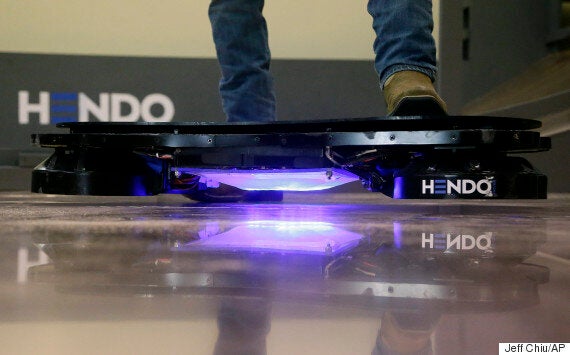In what may prove to be the most science fictionesque development in disaster relief, Arx Pax hoverboard inventors claim their technology can now lift houses and buildings of all shapes and sizes above earthquakes.

In order to work, the house would need to be connected to the U.S. Geological Survey's shake alert system that warns residents of incoming earthquakes using a series of sensors on fault lines.
Once the house detects the alert, Arx Pax hover technology would use a repulsive electromagnetic force to lift the building off the ground for 90 seconds.
Greg Henderson, co-founder and CEO at Arx Pax says the technology is cost-effective but the company's hoverboard, which it unveiled in October costs $10,000.
Underlying all this potential hovering is what Arx Pax call Magnetic Field Architecture (MFA) that works using Lentz's principle -- a physics law describing the interaction electric current has with changing magnetic fields.
If the the company's hoverboard is anything to go by, one of the major catches of the proposal (aside from the cost of building houses with hover engines) is that you need a metal surface for the science to work.
However, Henderson is confident that his hovering houses could be a solution to earthquake prone areas in the U.S.
In a statement he said: "Weaving ShakeAlert into our MFA seismic isolation solution provides a valuable new tool to architects, engineers, and developers who are looking for a better way to build in areas affected by earthquakes.
"Our goal is to eliminate structural movement by pinpointing the exact time an object or building’s ‘landing gear’ should retract and activate the hover engines.”
Berkeley Seismological Laboratory who are collaborating with Arx Pax added: "Arx Pax’s new MFA base isolation technology combined with the ShakeAlert early-warning system will allow state-of-the-art seismic protection and vibration control for buildings, operating rooms, highly calibrated instruments and much more.”
If the technology proves to be scalable, hovering houses could become a life-saving option for nations such as Nepal where over 8,500 people lost their lives after being hit by two of the most deadliest earthquakes.